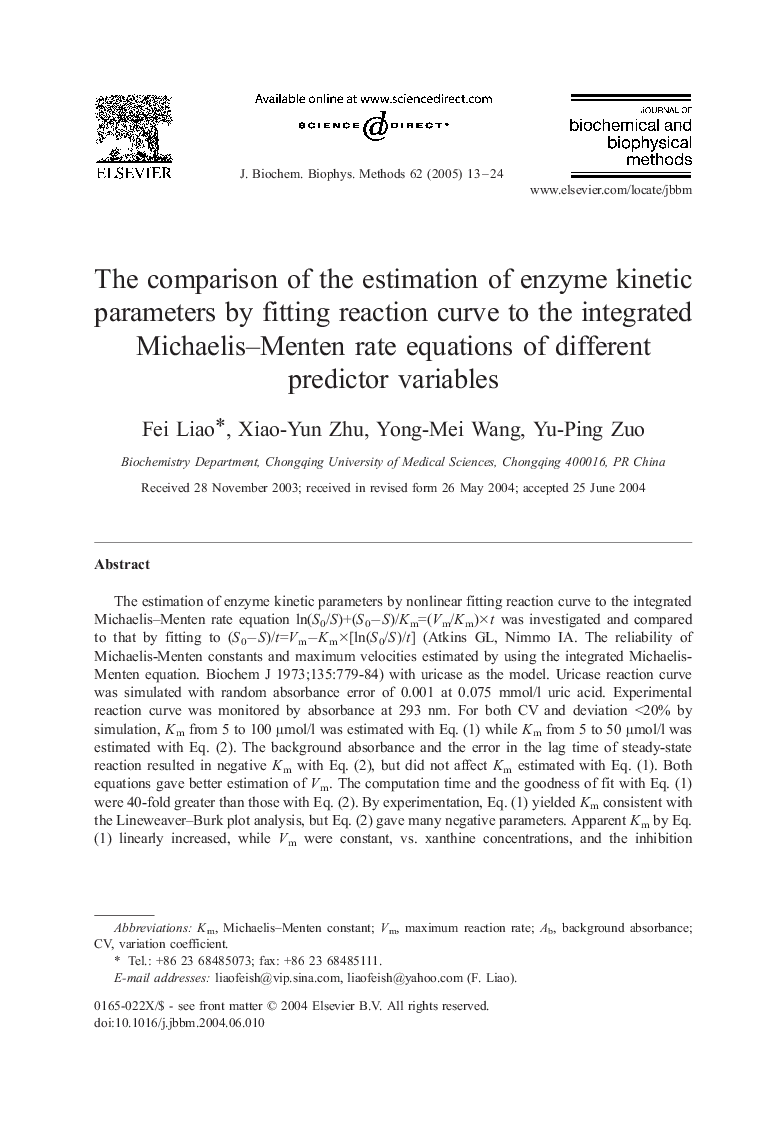| Article ID | Journal | Published Year | Pages | File Type |
|---|---|---|---|---|
| 10825177 | Journal of Biochemical and Biophysical Methods | 2005 | 12 Pages |
Abstract
The estimation of enzyme kinetic parameters by nonlinear fitting reaction curve to the integrated Michaelis-Menten rate equation ln(S0/S)+(S0âS)/Km=(Vm/Km)Ãtwas investigated and compared to that by fitting to (S0âS)/t=VmâKmÃ[ln(S0/S)/t] (Atkins GL, Nimmo IA. The reliability of Michaelis-Menten constants and maximum velocities estimated by using the integrated Michaelis-Menten equation. Biochem J 1973;135:779-84) with uricase as the model. Uricase reaction curve was simulated with random absorbance error of 0.001 at 0.075 mmol/l uric acid. Experimental reaction curve was monitored by absorbance at 293 nm. For both CV and deviation <20% by simulation, Km from 5 to 100 μmol/l was estimated with Eq. (1) while Km from 5 to 50 μmol/l was estimated with Eq. (2). The background absorbance and the error in the lag time of steady-state reaction resulted in negative Km with Eq. (2), but did not affect Km estimated with Eq. (1). Both equations gave better estimation of Vm. The computation time and the goodness of fit with Eq. (1) were 40-fold greater than those with Eq. (2). By experimentation, Eq. (1) yielded Km consistent with the Lineweaver-Burk plot analysis, but Eq. (2) gave many negative parameters. Apparent Km by Eq. (1) linearly increased, while Vm were constant, vs. xanthine concentrations, and the inhibition constant was consistent with the Lineweaver-Burk plot analysis. These results suggested that the integrated rate equation that uses the predictor variable of reaction time was reliable for the estimation of enzyme kinetic parameters and applicable for the characterization of enzyme inhibitors.
Related Topics
Life Sciences
Biochemistry, Genetics and Molecular Biology
Biochemistry
Authors
Fei Liao, Xiao-Yun Zhu, Yong-Mei Wang, Yu-Ping Zuo,
